[Editorial] Top 10 British Horror Films

Blood on Satan’s Claw (1971) dir. Piers Haggard
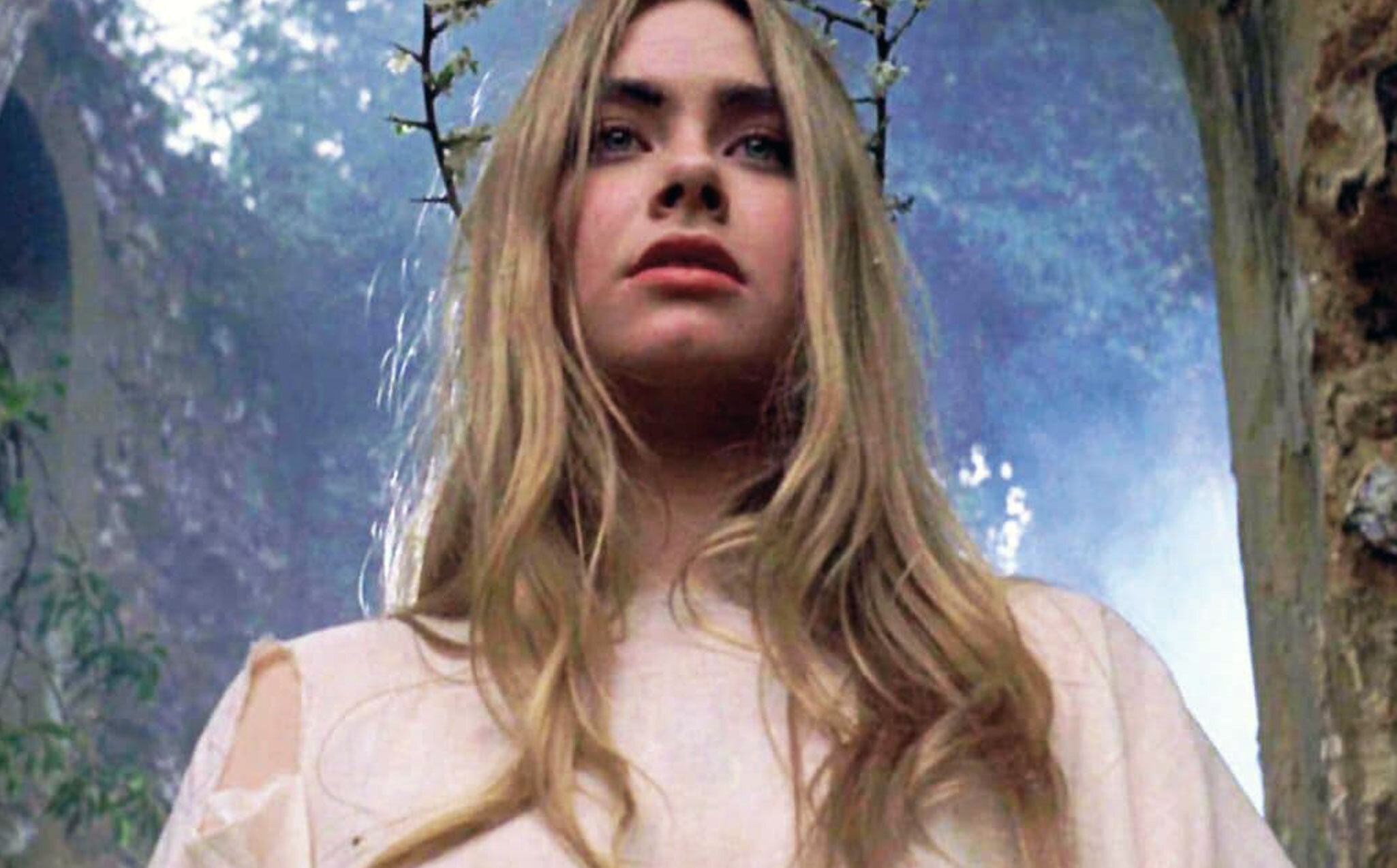
One of the only ‘historic’ films on the list occurs in eighteenth century, rural England. Fearing their community has been taken over by witchcraft, the townspeople call in ‘the judge’ to assess the situation. The children of the town are being corrupted by the ‘evil force’ to run amuck: they torture, rape, and kill. I believe this to be a social commentary on how people in the 1970s were beginning to see children and adolescents as a nuisance, bringing chaos (‘witchcraft’) to society. It is a scary thought to think Angel Blake (Linda Hayden), the antagonist, is the symbolic embodiment of teenagers in the 1970s.
The Descent (2005) dir. Neil Marshall

The Descent is the ultimate girls’ trip gone wrong. The film follows main protagonist Sarah (Shauna Macdonald) and her friends as they are hiking and descend into a labyrinth of caves… ones that they never return from. Not only are the girls trying to survive the horrors of being stuck in an enclosed terrifying space with limited supplies, but they are also entrapped with otherworldly creatures known as the crawlers. The atmosphere feels claustrophobic, and some scenes make your skin crawl. As each one of the women scramble to be the final girl, the intensity and pace of the film is enough to make viewers question if anyone survives the descent at all.
Hellraiser (1987) dir. Clive Barker
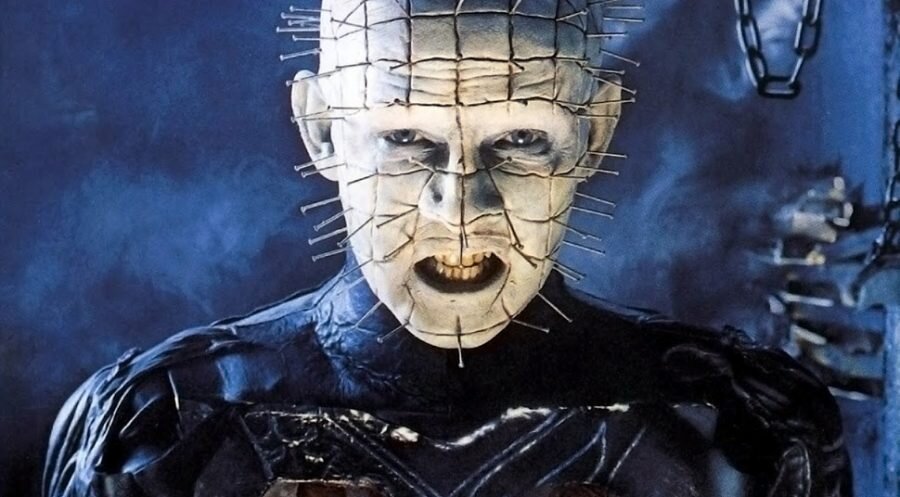
Hellraiser is based on Clive Barker’s 1986 novella, The Hellbound Heart. It is possibly one of the strangest films I have ever watched, but certainly a very interesting one. The film shows what happens when the nuclear family goes wrong: adultery, sadomasochism, and death. It also introduces the horrific Cenobites. They are creatures from another dimension that cannot differentiate between pain and pleasure, which makes them extremely dangerous. The leader of the Cenobites – Pinhead – is deeply rooted in popular imagination because of his grotesque appearance, which is enough to give anybody nightmares.
The Company of Wolves (1984) dir. Neil Jordan
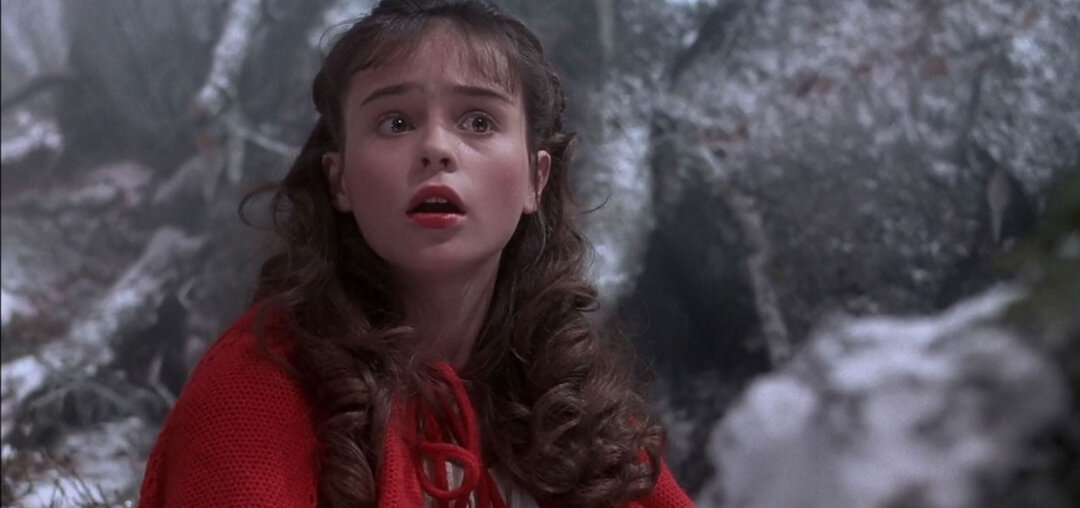
The Company of Wolves is based on Angela Carter’s 1979 short story of the same name in The Bloody Chamber. The main protagonist Rosaleen (Sarah Patterson) is told by her grandmother to “never stray from the path, never eat a windfall apple and never trust a man whose eyebrows meet”. Naturally, our fiery protagonist does all these things. We see Rosaleen journey through the woods and discover her passions, desires, and sexuality. The film cleverly spins retelling the story of Little Red Riding Hood, concluding with the protagonist transforming into something sinister. Essentially the film illustrates showing the horrors and realities of the journey from childhood to adolescence.
Peeping Tom (1960) dir. Micheal Powell

The story follows a sadistic serial killer and aspiring filmmaker Mark Lewis (Karlheinz Böhm) who at first glance seems seemingly normal) who records his victims' last moments. The film was revolutionary at the time because the point of view is through the eyes of the killer. The viewer identification shifts – almost like the audience is doing the killing. The ultimate voyeuristic gaze is amplified by Mark’s obsession with recording his victims' last moments. This film warns of the horrors women can face in real life with unwanted male gaze, male intrusion, and death.
28 days Later (2002) dir. Danny Boyle
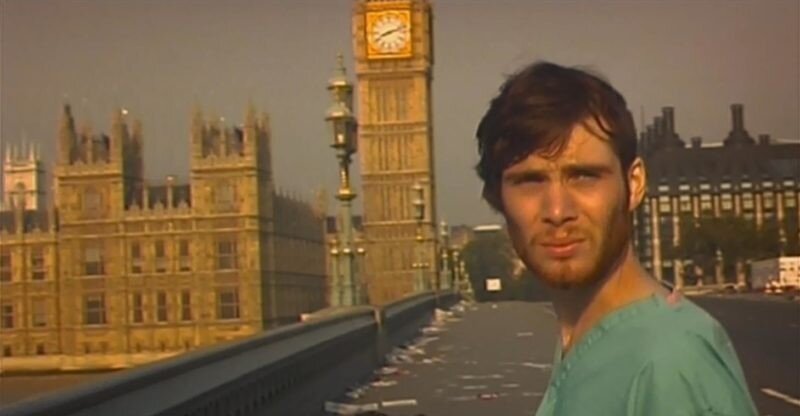
Jim (Cillian Murphy) awakens in the hospital after the “rage” virus has taken over England to find the city completely deserted. The film is about Jim trying to survive in a post-apocalyptic world filled with rage filled zombies. The thought of post-societal and bleak England is quite terrifying now, considering that we have survived the apocalypse of some sorts recently. The film is even scarier in a 2021 context with the uncertainty of how the coronavirus has affected the economy, the ongoing moral panic surrounding the national lockdowns, and the possible effects of the covid vaccination in the future.
The Omen (1976) dir. Richard Donner
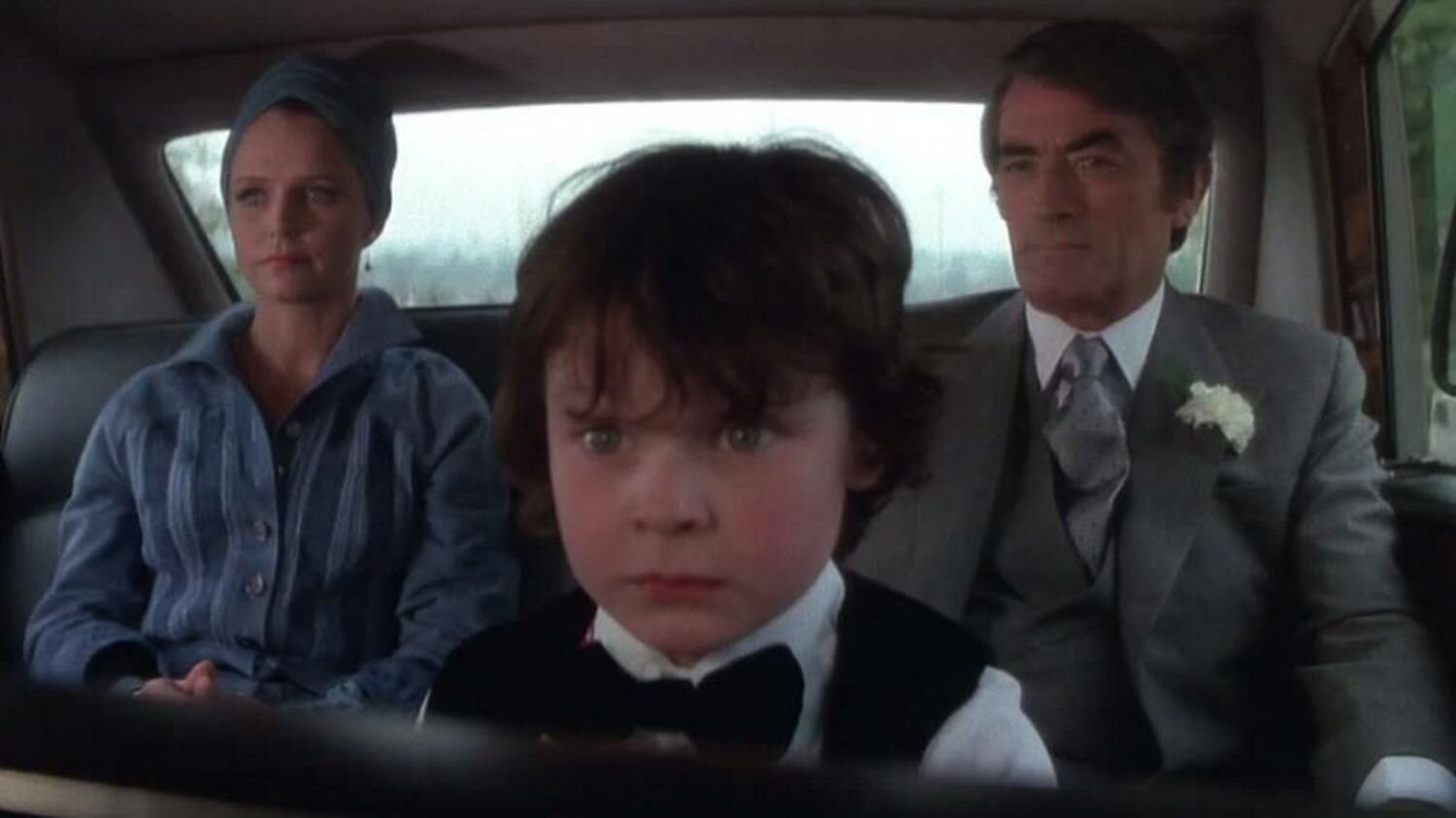
Whilst The Omen is technically an “American-British”horror film, it is a cinematic masterpiece. The film follows the story of a boy, Damien, in which strange deaths and occurrences happen in his presence. By the end of the film, viewers know that the child is the Antichrist . The film has left a legacy in popular culture because of its heavy theme of satanism, which dominated 1970s cinema (along with Blood on Satan’s Claw). What is particularly chilling about The Omen is that its main antagonist is a little child. Given the choice, would audiences eradicate a child to save humanity, and have the blood of an “innocent” on their hands?
Village of the Damned (1960) dir. Wolf Rilla
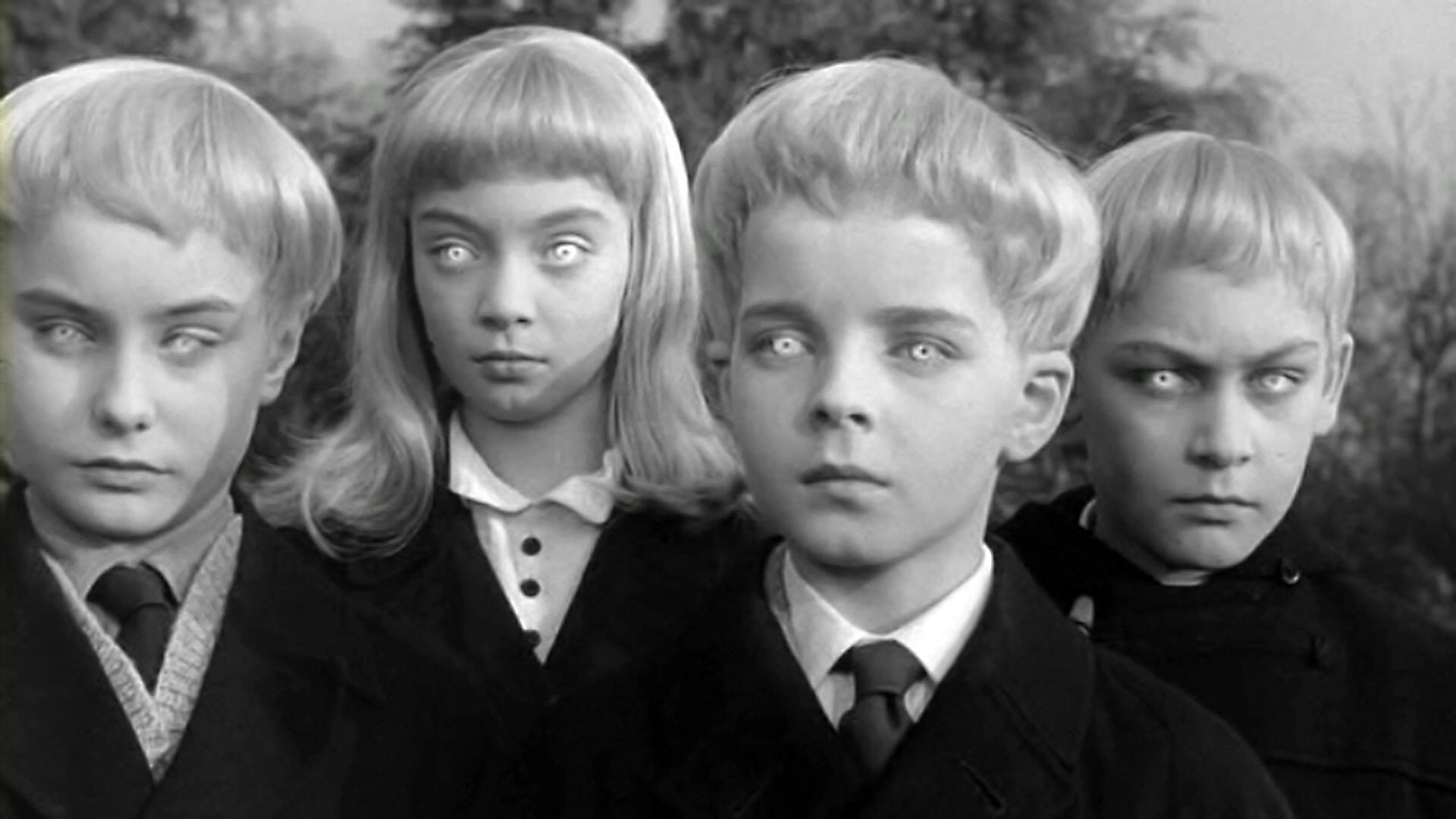
An entire village of people fall unconscious and when they wake up all the women are mysteriously pregnant. The resulting children are terrifying. Their appearances are strange, they all look alike, with bright blonde hair and piercing glowing eyes. The children talk, act, and think in unison. They are some of the creepiest children depicted in horror cinema. The townsfolk are afraid of and despise the children who are different. The film was produced just ten years after the height of McCarthyism – Village of the Damned is illustrative of the fear people have towards others who are different.
The Wicker Man (1973) dir. Robin Hardy

A cult classic, the film is one of the Unholy Trinity of Folk Horror, along with Blood on Satan’s Claw (1971) and Witchfinder General (1968). Based on an anonymous tip, Sergeant Neil Howie (Alec Westwood) visits the isolated island of Summerisle to search for a girl who had gone missing. The islanders have Pagan beliefs that contrast Howie’s staunch beliefs of Christianity: Howie is repulsed by the islander’s public nudity and pagan rituals (including sacrifice). Ultimately, this film is one about conflicting ideology: the blurred lines between good and evil, tradition and the non-traditional and Christian and Pagan.
Shaun of the Dead (2004) dir. Edgar Wright
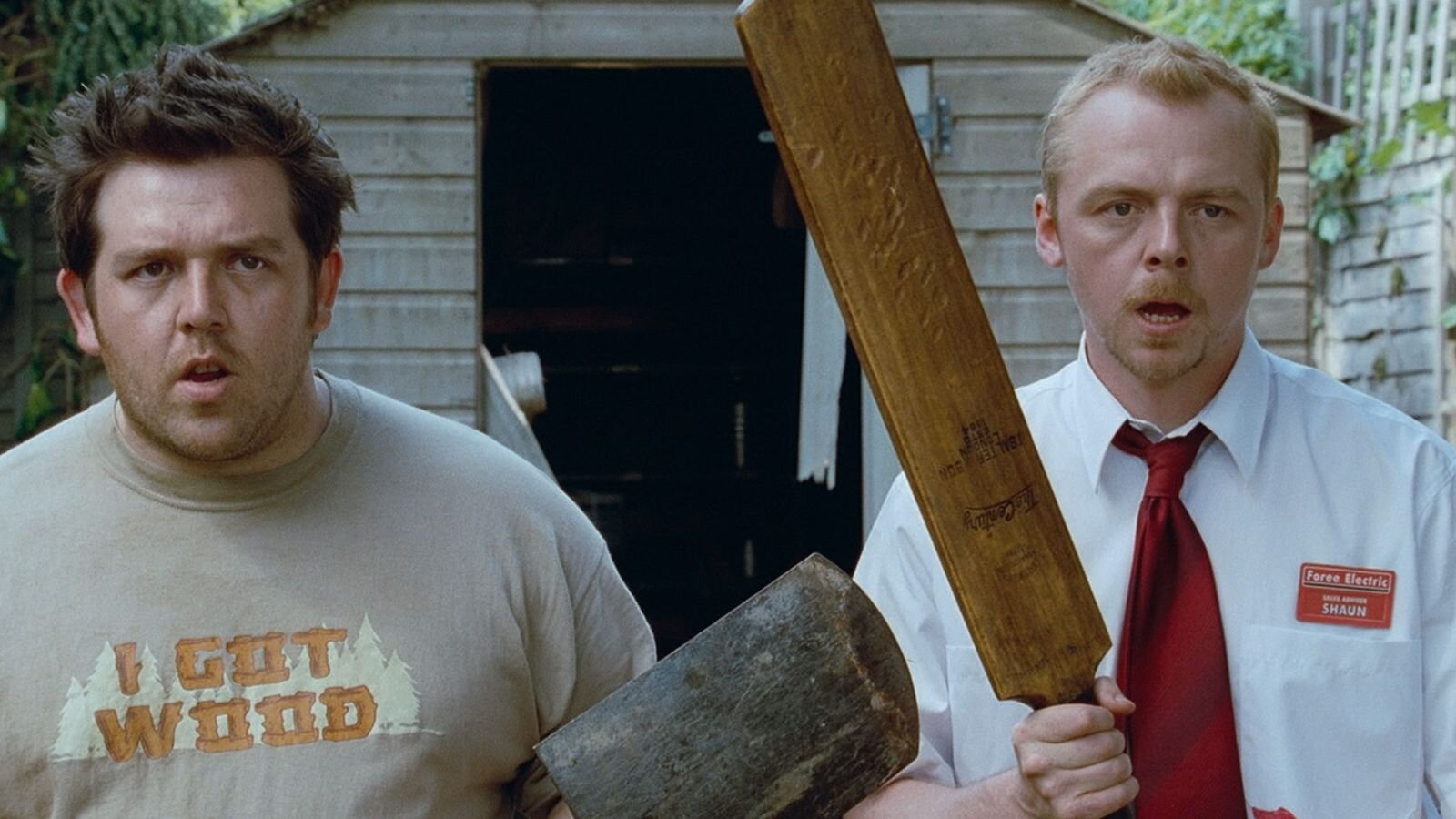
The most light-hearted film on the list, Shaun (Simon Pegg), a salesman from Crouch End must survive a Zombie apocalypse with his best friend Ed (Nick Frost). The comedy is non-stop, the zombies are genuinely terrifying as they are driven by the instinct to eat human flesh. However, the mix of comedy and horror work well together. The encounters that Ed and Shaun have with the zombies are symbolic of the trials and tribulations of the average life as a working-class person from Crouch End.
When people think of horror films, slashers are often the first thing that comes to mind. The sub-genres also spawned a wealth of horror icons: Freddy, Jason, Michael, Chucky - characters so recognisable we’re on first name terms with them. In many ways the slasher distills the genre down to some of its fundamental parts - fear, violence and murder.
Throughout September we were looking at slasher films, and therefore we decided to cover a slasher film that could be considered as an underrated gem in the horror genre. And the perfect film for this was Franck Khalfoun’s 2012 remake of MANIAC.
In the late seventies and early eighties, one man was considered the curator of all things gore in America. During the lovingly named splatter decade, Tom Savini worked on masterpieces of blood and viscera like Dawn of the Dead (1978), a film which gained the attention of hopeful director William Lustig, a man only known for making pornography before his step into horror.
Looking for some different slasher film recommendations? Then look no fruther as Ariel Powers-Schaub has 13 non-typical slasher horror films for you to watch.
Even though they are not to my personal liking, there is no denying that slasher films have been an important basis for the horror genre, and helped to build the foundations for other sub-genres throughout the years.
But some of the most terrifying horrors are those that take place entirely under the skin, where the mind is the location of the fear. Psychological horror has the power to unsettle by calling into question the basis of the self - one's own brain.
On Saturday, 17th June 2023, I sat down with two friends to watch The Human Centipede (First Sequence) (2009) and The Human Centipede 2 (Full Sequence) (2012). I was nervous to be grossed out (I can’t really handle the idea of eating shit) but excited to cross these two films off my list.
Many of the most effective horror films involve blurring the lines between waking life and a nightmare. When women in horror are emotionally and psychologically manipulated – whether by other people or more malicious supernatural forces – viewers are pulled into their inner worlds, often left with a chilling unease and the question of where reality ends and the horror begins.
Body horror is one of the fundamental pillars of the horror genre and crops up in some form or another in a huge variety of works. There's straightforward gore - the inherent horror of seeing the body mutilated, and also more nuanced fears.
In the sweaty summer of 1989, emerging like a monochrome migraine from the encroaching shadow of Japan’s economic crash, Shin’ya Tsukamoto’s Tetsuo: The Iron Man shocked and disgusted the (very few) audiences originally in attendance.
Whether it's the havoc wreaked on the human body during pregnancy, emotional turmoil producing tiny murderous humans or simply a body turning on its owner, body horror films tend to be shocking. But while they're full of grotesque imagery, they're also full of thoughtful premises and commentary, especially when it comes to women, trauma, and power.
The human body is a thing of wonder and amazement–the way it heals itself, regenerates certain parts and can withstand pain and suffering to extreme extents. But the human body can also be a thing of disgust and revulsion–with repugnant distortions, oozing fluids and rotting viscera.
This June we’ve been looking at originals and their remakes—and whilst we don’t always agree with horror film remakes, some of them often bring a fresh perspective to the source material. For this episode, we are looking at the remake of one of the most controversial exploitation films, The Last House on the Left (2009).
The year was 1968 and a young man named George A. Romero had shot his first film, a horror movie that would change the world of cinema and not just horror cinema, at that. Night of the Living Dead (1968), would go on to become one of the most important and famous horror films of all time as it tackled not only survival horror but also very taboo and shocking topics like cannibalism and matricide.
In the end I decided to indulge myself by picking eight of my favourite shorts, and choosing features to pair with them that would work well as a double bill. The pairs might be similar in tone, subject or style; some of the shorts are clearly influenced by their paired movie, while others predate the features.
RELATED ARTICLES
Now it’s time for Soho’s main 2023 event, which is presented over two weekends: a live film festival at the Whirled Cinema in Brixton, London, and an online festival a week later. Both have very rich and varied programmes (with no overlap this year), with something for every horror fan.
In the six years since its release the Nintendo Switch has amassed an extensive catalogue of games, with everything from puzzle platformer games to cute farming sims to, uh, whatever Waifu Uncovered is.
If you like cults, sacrificial parties, and lesbian undertones then Mona Awad’s Bunny is the book for you. Samantha, a student at a prestigious art university, feels isolated from her cliquey classmates, ‘the bunnies’.
The slasher sub genre has always been huge in the world of horror, but after the ‘70s and ‘80s introduced classic characters like Freddy Krueger, Michael Myers, Leatherface, and Jason, it’s not harsh to say that the ‘90s was slightly lacking in the icon department.
Being able to see into the future or back into the past is a superpower that a lot of us would like to have. And while it may seem cool, in horror movies it usually involves characters being sucked into terrifying situations as they try to save themselves or other people with the information they’ve gleaned in their visions.
While some films successfully opt to leave the transformation scene out completely, like the wonderful Dog Soldiers (2002), those who decide to include it need to make sure they get it right, or it can kill the whole vibe of the film. So load up on silver bullets, mark your calendar for the next full moon, and check out 11 of the best werewolf transformations!
I am a Shyamalan apologist. I would say I’m sorry but I’m really not. I know he has some questionable films and has made some unorthodox choices over the years when it comes to his twists, but the king of narrative spin still stands tall in my book.
Strap in folks, because the aliens have landed and they’re here to probe, eviscerate, procreate, and replace…
Let’s take a look at nine of the most amazing antler deaths in horror!
Here are 9 home invasion horrors that will cause you to double check whether you’ve locked all your doors and windows.
Ghouls Magazine’s list of the top 7 modern folk horrors

EXPLORE
Now it’s time for Soho’s main 2023 event, which is presented over two weekends: a live film festival at the Whirled Cinema in Brixton, London, and an online festival a week later. Both have very rich and varied programmes (with no overlap this year), with something for every horror fan.
In the six years since its release the Nintendo Switch has amassed an extensive catalogue of games, with everything from puzzle platformer games to cute farming sims to, uh, whatever Waifu Uncovered is.
A Quiet Place (2018) opens 89 days after a race of extremely sound-sensitive creatures show up on Earth, perhaps from an exterritorial source. If you make any noise, even the slightest sound, you’re likely to be pounced upon by these extremely strong and staggeringly fast creatures and suffer a brutal death.
If you like cults, sacrificial parties, and lesbian undertones then Mona Awad’s Bunny is the book for you. Samantha, a student at a prestigious art university, feels isolated from her cliquey classmates, ‘the bunnies’.
The slasher sub genre has always been huge in the world of horror, but after the ‘70s and ‘80s introduced classic characters like Freddy Krueger, Michael Myers, Leatherface, and Jason, it’s not harsh to say that the ‘90s was slightly lacking in the icon department.
Mother is God in the eyes of a child, and it seems God has abandoned the town of Silent Hill. Silent Hill is not a place you want to visit.
Being able to see into the future or back into the past is a superpower that a lot of us would like to have. And while it may seem cool, in horror movies it usually involves characters being sucked into terrifying situations as they try to save themselves or other people with the information they’ve gleaned in their visions.
Both the original Pet Sematary (1989) and its 2019 remake are stories about the way death and grief can affect people in different ways. And while the films centre on Louis Creed and his increasingly terrible decision-making process, there’s no doubt that the story wouldn’t pack the same punch or make the same sense without his wife, Rachel.


![[Editorial] 5 Slasher Short Horror Films](https://images.squarespace-cdn.com/content/v1/5fe76a518d20536a3fbd7246/1696358009946-N8MEV989O1PAHUYYMAWK/Screenshot+2023-10-03+at+19.33.19.png)
![[Ghouls Podcast] Maniac (2012) with Zoë Rose Smith and Iona Smith](https://images.squarespace-cdn.com/content/v1/5fe76a518d20536a3fbd7246/1696356006789-NYTG9N3IXCW9ZTIJPLX2/maniac.jpg)
![[Editorial] If Looks Could Kill: Tom Savini’s Practical Effects in Maniac (1980)](https://images.squarespace-cdn.com/content/v1/5fe76a518d20536a3fbd7246/1694952175495-WTKWRE3TYDARDJCJBO9V/Screenshot+2023-09-17+at+12.57.55.png)
![[Editorial] Deeper Cuts: 13 Non-Typical Slashers](https://images.squarespace-cdn.com/content/v1/5fe76a518d20536a3fbd7246/1694951568990-C37K3Z3TZ5SZFIF7GCGY/Curtains-1983-Lesleh-Donaldson.jpg)
![[Editorial] Editor’s Note: Making a slash back into September](https://images.squarespace-cdn.com/content/v1/5fe76a518d20536a3fbd7246/1694354202849-UZE538XIF4KW0KHCNTWS/MV5BMTk0NTk2Mzg1Ml5BMl5BanBnXkFtZTcwMDU2NTA4Nw%40%40._V1_.jpg)
![[Editorial] 8 Mind Horror Short films](https://images.squarespace-cdn.com/content/v1/5fe76a518d20536a3fbd7246/1693504844681-VPU4QKVYC159AA81EPOW/Screenshot+2023-08-31+at+19.00.36.png)
![[Editorial] Eat Shit and Die: Watching The Human Centipede (2009) in Post-Roe America ](https://images.squarespace-cdn.com/content/v1/5fe76a518d20536a3fbd7246/1691245606758-4W9NZWE9VZPRV697KH5U/human_centipede_first_sequence.original.jpg)
![[Editorial] Top 15 Female-Focused Mind Horror Films](https://images.squarespace-cdn.com/content/v1/5fe76a518d20536a3fbd7246/1691247166903-S47IBEG7M69QXXGDCJBO/Image+5.jpg)
![[Editorial] 8 Body Horror Short films](https://images.squarespace-cdn.com/content/v1/5fe76a518d20536a3fbd7246/1690838270920-HWA5RSA57QYXJ5Y8RT2X/Screenshot+2023-07-31+at+22.16.28.png)
![[Editorial] Metal Heart: Body Dysmorphia As A Battle Ground In Tetsuo: The Iron Man (1989)](https://images.squarespace-cdn.com/content/v1/5fe76a518d20536a3fbd7246/1690190127461-X6NOJRAALKNRZY689B1K/Screenshot+2023-07-24+at+10.08.27.png)
![[Editorial] Top 15 Female-Focused Body Horror Films](https://images.squarespace-cdn.com/content/v1/5fe76a518d20536a3fbd7246/1689081174887-XXNGKBISKLR0QR2HDPA7/download.jpeg)
![[Editorial] Editor’s Note: Getting sticky, slimy & sexy with body horror](https://images.squarespace-cdn.com/content/v1/5fe76a518d20536a3fbd7246/1689072388373-T4UTVPVEEOM8A2PQBXHY/Society-web.jpeg)
![[Ghouls Podcast] The Last House on the Left (2009) with Zoë Rose Smith and Jerry Sampson](https://images.squarespace-cdn.com/content/v1/5fe76a518d20536a3fbd7246/1687863043713-54DU6B9RC44T2JTAHCBZ/last+house+on+the+left.jpg)
![[Editorial] They’re Coming to Re-Invent You, Barbara! Night of the Living Dead 1968 vs Night of the Living Dead 1990](https://images.squarespace-cdn.com/content/v1/5fe76a518d20536a3fbd7246/1687199945212-BYWYXNBSH00C4V3UIOFQ/Screenshot+2023-06-19+at+19.05.59.png)
![[Editorial] 8 Short & Feature Horror Film Double Bills](https://images.squarespace-cdn.com/content/v1/5fe76a518d20536a3fbd7246/1687770541477-2A8J2Q1DI95G8DYC1XLE/maxresdefault.jpeg)
![[Editorial] 10 Films & Events to Catch at Soho Horror Film Fest 2023](https://images.squarespace-cdn.com/content/v1/5fe76a518d20536a3fbd7246/1700819417135-299R7L4P0B676AD3RO1X/Screenshot+2023-11-24+at+09.41.52.png)
![[Editorial] 9 Horror Nintendo Switch Games To Play](https://images.squarespace-cdn.com/content/v1/5fe76a518d20536a3fbd7246/1697214470057-3XZXX8N4LYIMDFWS6Z3P/Screenshot+2023-10-13+at+17.20.13.png)
![[Editorial] 5 Female Focused Horror Book Recommendations](https://images.squarespace-cdn.com/content/v1/5fe76a518d20536a3fbd7246/1696441981361-52EQCTJ7AT2QF1927GM7/919xtm6d3fL._AC_UF894%2C1000_QL80_.jpg)
![[Editorial] 9 Best Slashers Released Within 10 Years of Scream (1996)](https://images.squarespace-cdn.com/content/v1/5fe76a518d20536a3fbd7246/1695478839037-LOFHGVM3H6BMSZW7G83M/Screenshot+2023-09-23+at+15.15.11.png)
![[Editorial] 9 Terrifying Cerebral Visions in Horror Movies](https://images.squarespace-cdn.com/content/v1/5fe76a518d20536a3fbd7246/1693509801235-X23OL50T1DVGECH0ZJK2/MV5BMjQ0MTg2MjQ4MV5BMl5BanBnXkFtZTgwMTU3NDgxMTI%40._V1_.jpg)
![[Editorial] 11 Best Werewolf Transformations in Horror Films](https://images.squarespace-cdn.com/content/v1/5fe76a518d20536a3fbd7246/1689240234098-HUPQC6L57AAHFJNT8FTE/Screenshot+2023-07-13+at+10.09.13.png)
![[Editorial] Ranking M. Night Shyamalan: his Good, his Bad, Not so Good, and his Twists](https://images.squarespace-cdn.com/content/v1/5fe76a518d20536a3fbd7246/1687196229638-MMAFHN9EL2RXAEJO5G3B/Screenshot+2023-06-19+at+18.21.53.png)
![[Editorial] Top 15 Aliens in Sci-Fi & Horror Films](https://images.squarespace-cdn.com/content/v1/5fe76a518d20536a3fbd7246/1685351258912-P3ETEO2CL7F54CS4QKX3/image12.png)
![[Editorial] The 9 Most Amazing Antler Deaths in Horror](https://images.squarespace-cdn.com/content/v1/5fe76a518d20536a3fbd7246/1684065424643-3XDDCWVBM6CCQPXF4YTW/Image+2+%2840%29.jpg)
![[Editorial] 9 of The Best Home Invasion Horror Movies](https://images.squarespace-cdn.com/content/v1/5fe76a518d20536a3fbd7246/1683913399685-G6Y54FFWUCL4CW6ISJB1/Image+1+%2841%29.jpg)
![[Editorial] Best 7 Modern Folk Horror Movies](https://images.squarespace-cdn.com/content/v1/5fe76a518d20536a3fbd7246/1683911092170-GWP8UTCBGMTAMESB3TH9/ph_1680770022642e83e625d4e.jpg)





















![[Mother of Fears] Mothering in Silence in A Quiet Place (2018)](https://images.squarespace-cdn.com/content/v1/5fe76a518d20536a3fbd7246/1696445921315-HZJ2DZYQIH6VVWXBO2YL/Screenshot+2023-10-04+at+19.52.29.png)
![[Mother of Fears] Mother Vs. Monster in Silent Hill (2006)](https://images.squarespace-cdn.com/content/v1/5fe76a518d20536a3fbd7246/1695485781119-H6GNP0G3J2TLPAOIABV7/Screenshot+2023-09-23+at+17.11.56.png)
![[Mother of Fears] I Don’t Wanna Be Buried in a Pet Sematary (1989) and (2019)](https://images.squarespace-cdn.com/content/v1/5fe76a518d20536a3fbd7246/1691328766069-QFNAVJOMFZVZ5CLU1RWM/Screenshot+2023-08-06+at+14.23.13.png)

I can sometimes go months without having a panic attack. Unfortunately, this means that when they do happen, they often feel like they come out of nowhere. They can come on so fast and hard it’s like being hit by a bus, my breath escapes my body, and I can’t get it back.